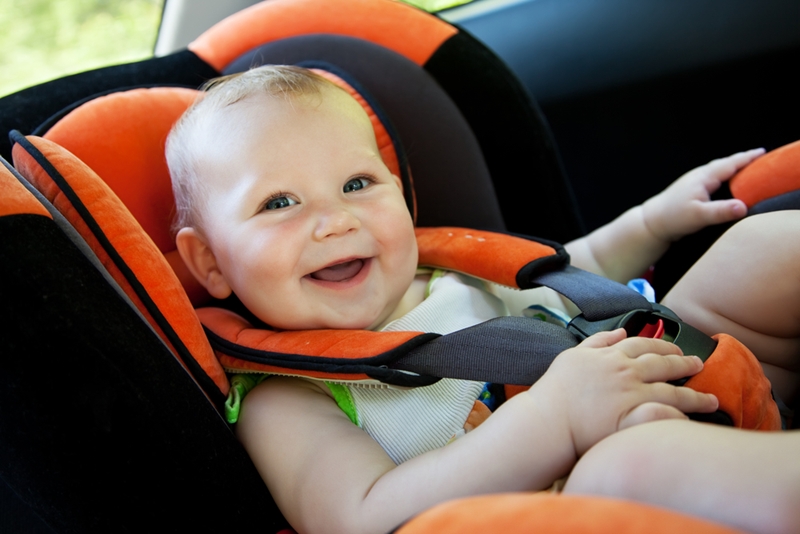
The vehicle identification number (VIN) is composed of 17 characters (digits and capital letters) that act as a unique identifier for the vehicle. A VIN displays the car's unique features, specifications and manufacturer.
The VIN can be found in a couple of places including on the car's registration label (1), on the compliance plate in the engine bay (2) or on the passenger side windshield (3), or on one of the door posts (where the door latches when it is closed) (4). See the image below:
Whether you're finding a car for yourself or purchasing one for your teenager, it's important that you invest money in a vehicle that has a good track record of performing well in crashes. A car is essentially the only thing between you and another object should a collision happen, and so making sure that it has the crucial safety additions can reduce your risks during an accident.
The Australasian New Car Assessment Program (ANCAP) have developed a safety rating when testing how vehicles perform in a crash. It's out of five stars, and determines how well a vehicle will hold up, as well as protect the inside occupants1.
Of course, car crashes can be fatal, so buying a safe vehicle comes hand-in-hand with good driving habits.
So, what are some of the safest cars, according to ANCAP?
Hyundai Elantra
For models 2016 and onwards, the Hyundai Elantra performed spectacularly in ANCAP's rigorous testing1. Introduced in Australia and New Zealand markets early this year, it's a medium-sized car that looks pretty standard.
This vehicle features all the standard safety measures, such as airbags, seat belt reminders, and braking technology that all support its well-deserved five-star ANCAP safety rating.
The Elantra offered good protection against occupant protection, and it was noted that the doors could be easily opened in the occurrence of a crash. It also held up well in a side pole test, due to the curtain airbags.
Toyota Corolla
It's a make that's been around since your grandparents have been driving, but that's because historically, Corollas have been one of the more reliable ones of the bunch.
The model that ANCAP tested was the Toyota Corolla Hatch - first hitting Australia and New Zealand markets in 2012. The five-star rating that it receives also extends to the Hybrid variant from 20161.
This is a small car that can be commonly found second-hand for an acceptable price, making it great for young drivers. However, in order to live up to the five-star rating, you need to ensure that the car has been properly cared for in the past - a CarHistory report should be able to shed some light on the past of the car you are considering.

Mazda 2
The Mazda 2 has rear parking sensors - perfect for new drivers.
This small car can come in either a hatch or sedan body shape, and both receive top safety marks from ANCAP. In an accident, the Mazda 2 offers good whiplash protection, and gains near-perfect scores in both frontal and side impact testing1.
When browsing used Mazdas, keep in mind this safety rating only applies to models of the year 2014 and onwards. Buying such a recent model of a car for a first-time driver may seem like a pricey investment, but when it comes to the safety of your loved ones, protection should always be top priority.
What makes this possibly great for your teenager is that there are seatbelt reminders on all seats, not just for the driver and passenger, ensuring higher chances of safety for your teenager's friends. This Mazda is also equipped with rear parking sensors to help when reversing2 - that's something many new drivers find tricky, and can prove invaluable in the long run.
Suzuki Swift
Another oldie but a goodie, the Suzuki Swift has long been present on Aussie roads. It's small, compact and popular - five-star rating anyone? The results of ANCAP's crash tests were from models that came out in 2011, including the Sport1.
The chest region of a driver is more exposed to impact in frontal and side collisions, compared the previous cars listed here, but the results are still acceptable within ANCAP's standards. The crash test results for the Swift also mentioned that the centre back seat offers better protection with a three-point seatbelt as opposed to the usual lap belt1.
If any of these cars sound like something you or your teenager would like, check out our handy guide to financing for a first vehicle.
1ANCAP, ANCAP Safety Ratings. Accessed June, 2016.
2Mazda, Mazda2. Accessed June, 2016.